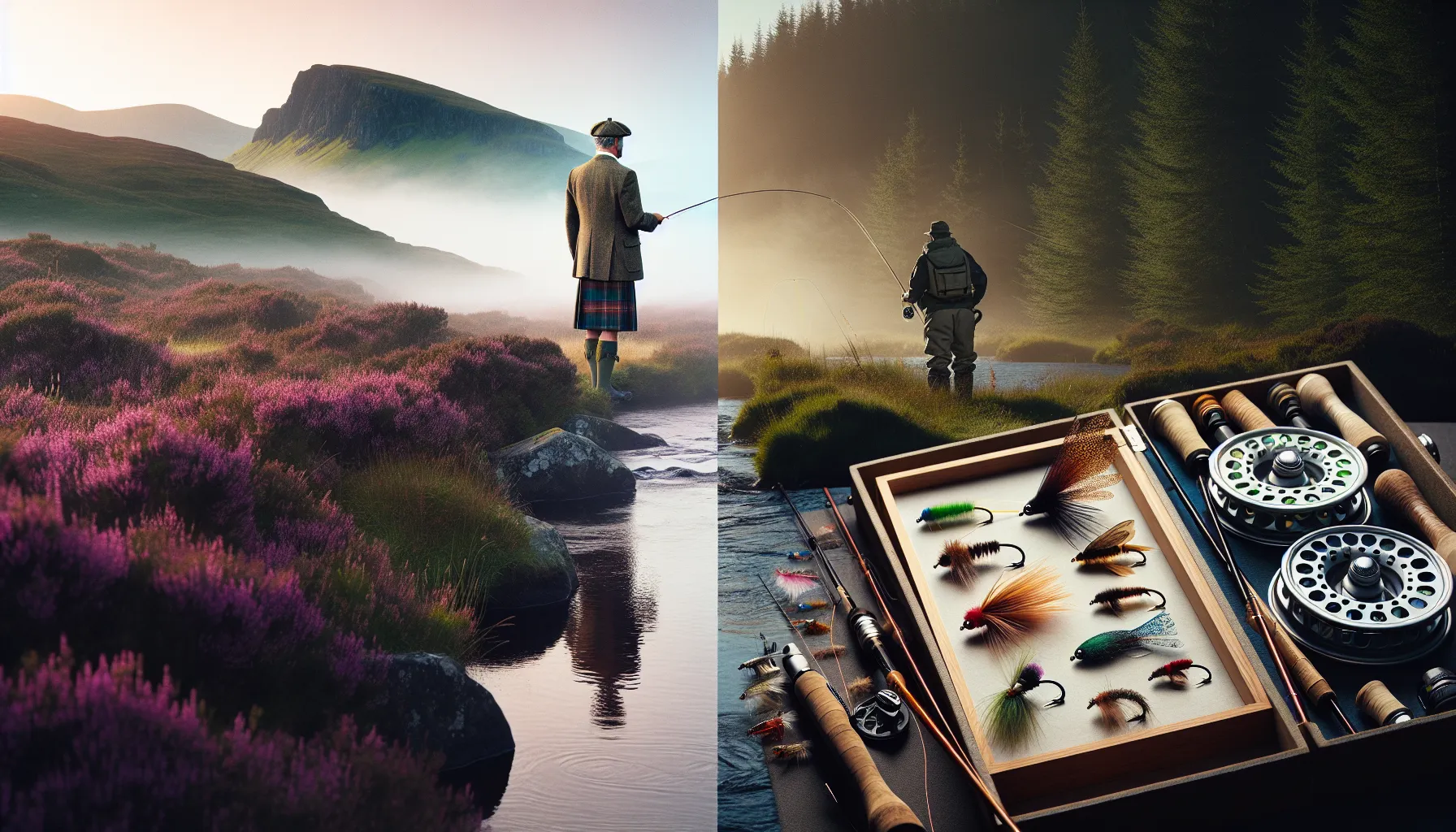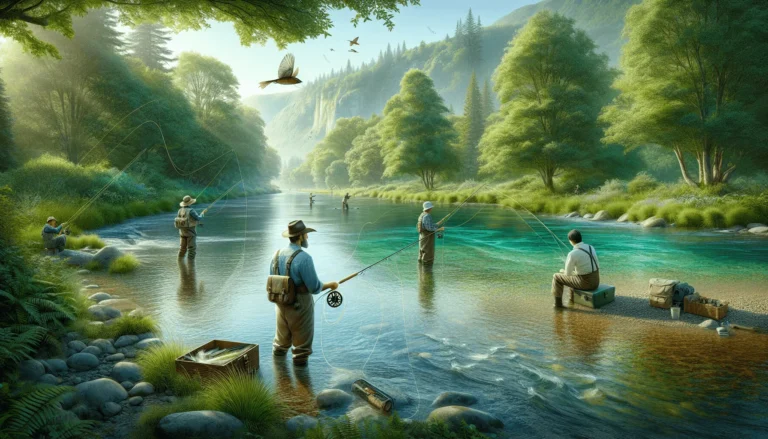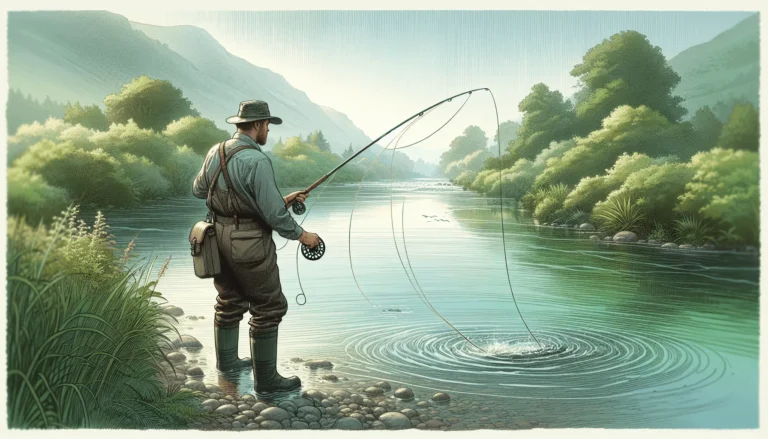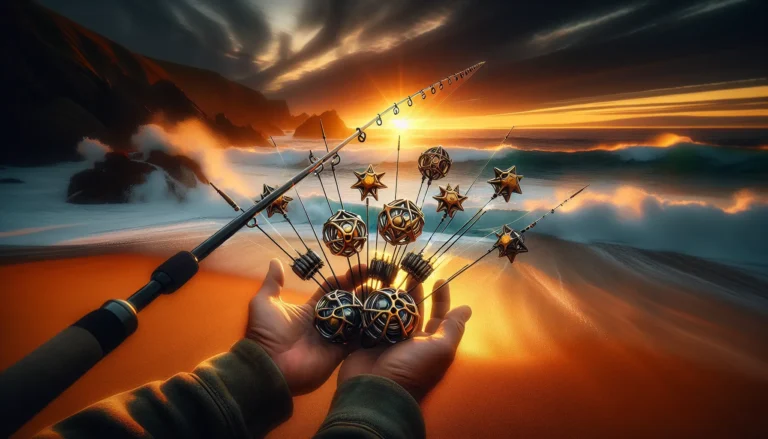Fly fishing enthusiasts have long debated the merits of British versus American approaches to the sport. This age-old rivalry has shaped fishing techniques, gear preferences, and even the way anglers interact with their environment. From the tranquil streams of England to the vast rivers of North America, each tradition has its unique charm and challenges.
The differences between British and American fly fishing extend beyond mere geography. They encompass variations in target species, fishing locations, and equipment choices. This article delves into the distinct characteristics of each style, examining their respective strengths and weaknesses. By exploring these contrasts, anglers can gain insights into both traditions and perhaps even enhance their own fishing experiences.
Fishing Locations and Accessibility
British Fishing Spots
The United Kingdom boasts a diverse array of renowned fishing locations that attract anglers from near and far. The country’s fishing spots offer a unique blend of natural beauty and abundant fish populations, making them ideal for both novice and experienced anglers.
One of the most iconic British fishing destinations is the River Test in Hampshire. Known for its gin-clear waters and rich habitat, the Test is a premier chalkstream that supports a thriving trout population. Nearby, the River Itchen stands out as another exceptional chalkstream, praised for its crystal-clear waters and wild trout.
In the southwest, the River Frome in Dorset offers anglers the opportunity to catch not only trout but also grayling and salmon. For those seeking a Welsh adventure, the River Usk is renowned for its large trout, with anglers reporting catches up to 5lb in weight.
American Fishing Spots
The United States offers an equally impressive range of fishing locations, from coastal waters to inland rivers and lakes. Each region presents its own unique characteristics and appeal to anglers.
Texas, for instance, is known for its species diversity and easy access to rivers. The Texas Hill Country, in particular, is a top freshwater fly fishing destination, with rivers like the Guadalupe, San Marcos, Comal, and Llano offering excellent opportunities for bass fishing.
Colorado is another state that stands out with its abundance of blue-ribbon wild trout streams. Rivers such as the Frying Pan, Gunnison, and Roaring Fork are iconic Western trout streams that offer some of the state’s best trout fishing.
Read Also: Why Is Fly Fishing So Expensive? The Truth Revealed
Accessibility Comparison
When it comes to accessibility, both British and American fishing spots present their own advantages and challenges. In the UK, many renowned fishing locations are easily accessible, with good infrastructure and nearby accommodations. For example, the River Test and River Itchen both have fly fishing schools located on their banks, making them ideal for beginners.
In the United States, accessibility can vary greatly depending on the location. Some spots, like those in Texas Hill Country, offer easy access to rivers. However, other locations, such as the Devil’s River in southwestern Texas, provide more remote experiences that rival Western overnight fly fishing float trips.
Both countries have implemented systems to improve access for anglers. In the UK, for instance, the Wye Usk Foundation has introduced a passport scheme that has opened up large sections of streams for easy day-ticket access. Similarly, in the US, many states have public access points and state-managed areas that provide opportunities for anglers to enjoy diverse fishing experiences .
Fishing Techniques and Target Species
British Fly Fishing Methods
In the United Kingdom, fly fishing is a popular sport for freshwater angling [4]. British anglers often employ traditional techniques such as dry fly fishing, nymph fishing, and streamer fishing. These methods are particularly effective in the gin-clear waters of chalkstreams like the River Test, which is renowned for its combination of wild and stocked Brown Trout.
One unique aspect of British fly fishing is the categorization of fish into two groups: coarse fish and game fish. Salmon and Trout are considered game species, while most others fall under the coarse fish category. This distinction influences fishing rules and etiquette in different water bodies.
Read Also: How to Choose What to Wear Under Waders When Fly Fishing
American Fly Fishing Methods
American fly fishing techniques are diverse and adaptable to various water conditions. Common methods include dry fly fishing, wet fly fishing, and streamers. In the United States, fly fishing is used to target a wide range of species, from trout in mountain streams to bass in lakes and even saltwater species like bonefish and tarpon.
A notable technique in American fly fishing is the use of streamers to locate fish. This method involves casting a streamer pattern, such as a Wooly Bugger or Maribou, to identify where fish are hiding. Even if the fish don’t strike, they often flash or chase the streamer, revealing their location.
Popular Fish Species in Each Country
In the United Kingdom, popular fly fishing targets include:
- Brown Trout (Salmo trutta)
- Atlantic Salmon (Salmo salar)
- Rainbow Trout (Oncorhynchus mykiss)
- Grayling (Thymallus thymallus)
- Sea Trout (Salmo trutta trutta)
The United States offers a diverse range of fly fishing opportunities, with popular species including:
- Rainbow Trout
- Brown Trout
- Brook Trout
- Largemouth Bass
- Smallmouth Bass
In addition to these freshwater species, American anglers also target saltwater fish such as tarpon, redfish, striped bass, and even sharks using fly fishing techniques.
Both countries share some common target species, such as brown trout and rainbow trout, but the fishing environments and local variations in techniques make each experience unique. Whether casting in the historic rivers of the UK or exploring the vast waterways of the US, fly fishing enthusiasts in both nations continue to refine their skills and pursue their passion for this time-honored angling method.
Read Also: Is Fly Fishing Hard to Master? Expert Insights Tips
Gear and Equipment Differences
British Fly Fishing Gear
British fly fishing gear tends to emphasize tradition and subtlety. Anglers in the UK often opt for shorter, lighter rods that are well-suited for the smaller, more intimate rivers and streams found throughout the country. These rods are typically paired with lightweight, simple reels that facilitate delicate presentations required on local waters.
The flies used in British fly fishing are often small and natural-looking, designed to blend seamlessly into the environment. This focus on imitation reflects the emphasis on traditional techniques and classic craftsmanship in British fly fishing culture.
American Fly Fishing Gear
In contrast, American fly fishing gear is often designed for larger, more open waterways. Anglers in the United States typically use longer, more powerful rods that allow for extended casts and can handle heavier flies and line weights. American reels tend to be larger and more robust, featuring large arbors and sophisticated drag systems to manage big fish and heavy lines.
American flies are generally larger and more flashy compared to their British counterparts, designed to attract fish in the often-murky waters found in many US rivers and lakes. This approach reflects the emphasis on performance and technological advancement in American fly fishing gear.
Equipment Comparison
While both British and American anglers share a passion for fly fishing, their equipment choices reflect distinct approaches to the sport. British gear often emphasizes classic materials like bamboo or fiberglass for rods, paired with simple, functional reels and lines. The focus is on craftsmanship and timeless design.
American gear, on the other hand, tends to be more technologically advanced, with graphite rods, sophisticated reels, and specialized fly lines being common. The emphasis is on maximizing casting distance and fish-fighting capability.
These differences extend to apparel as well, with British anglers typically favoring muted colors like olive, brown, and gray, while their American counterparts may opt for brighter, more vibrant hues. These distinctions in gear and equipment choices reflect the unique fishing environments, local traditions, and personal preferences of anglers in each region.
Read Also: Top 15 Best Gifts for Fly Fisherman in 2024
Conclusion
The comparison of British and American fly fishing traditions sheds light on the rich diversity within this cherished sport. Each approach has its unique strengths, from the subtle techniques and classic gear of British anglers to the adaptability and technological advancements favored by their American counterparts. These differences have an impact on not just the equipment used, but also the overall fishing experience and the way anglers interact with their environment.
At the end of the day, both British and American fly fishing styles offer valuable insights to analyze and appreciate. Whether you’re casting on a tranquil English chalkstream or exploring a vast American river, the essence of fly fishing remains the same – a connection with nature, the thrill of the catch, and the ongoing pursuit of skill improvement. This comparison serves not to crown a winner, but to celebrate the diversity that makes fly fishing a truly global passion.
FAQs
How do fishing practices differ between the Americas and Europe?
In the Americas, particularly in the U.S., fishing often involves actively hunting for fish, sometimes using methods like chumming, which is illegal in some places. In contrast, European methods, such as those used in Britain, typically involve strategies that “trap” fish using techniques that attract them without relying on movement.
Which countries are renowned for offering the best fly fishing experiences?
The United Kingdom is highly celebrated for its rich history and vibrant culture of fly fishing. Other top destinations for fly fishing include Iceland, Russia, Alaska, Brazil, New Zealand, Cuba, and Tierra Del Fuego, each offering unique experiences and scenic environments.
What are the primary types of fly fishing?
There are two main types of fly fishing:
- Dry Fly Fishing: This technique is used when trout are observed feeding on insects at the water’s surface.
- Nymph Fishing: This method targets the underwater stage of insect life, as most aquatic insects spend a significant portion of their lifecycle submerged.
Which type of fly fishing is considered the most challenging?
Nymphing is recognized as the most challenging form of fly fishing due to its complexity and the stealth required. However, it is also noted for being highly productive.




